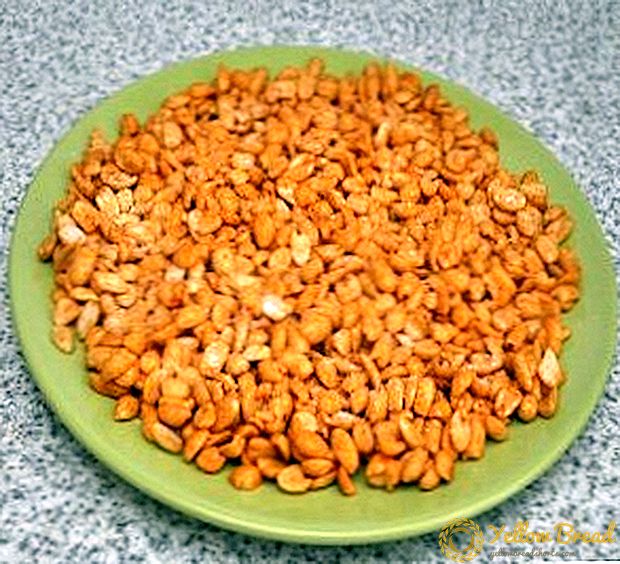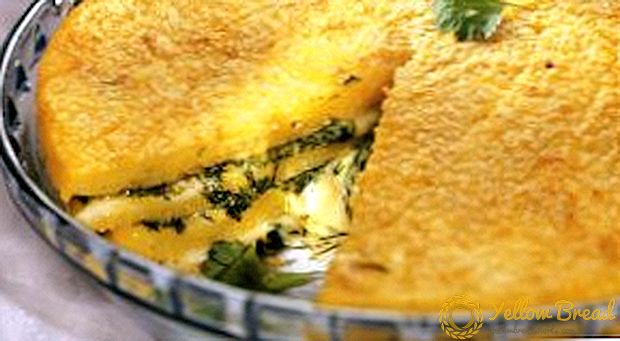 Not every rabbit grower turns out to find a specialist who can properly process the skin.
Not every rabbit grower turns out to find a specialist who can properly process the skin.
Therefore, there is a need for self-dressing rabbit hides at home and the majority asks the question of how to cut the rabbit skin correctly. And it is about this will be discussed in the article.
- How to remove the skin?
- Special features
- Post-slaughter processing
- Conservation and preservation
- Proper dressing at home (in stages)
- Soaking
- Cheeky
- Pickling
- Laying down
- Tanning
- Finishing
How to remove the skin?
In order to properly remove the skin, this procedure should begin with hanging carcasses by the hind legs at chest level. The skin of the animal must be removed from the hind legs. To do this, make cuts around the extremities, and then cut from paw to paw along the groin line and remove the tail.
Then you should remove the skin, pulling it down to the head, incising the muscles in the places of their joints with the skin. When it comes to the head, it is necessary to make cuts around the ears and eyes in order to easily remove the skin.
Special features
The next stage after skinning, it is processed - the removal of muscle particles and subcutaneous fat. And if necessary, conduct conservation.
Post-slaughter processing
After the fur has been removed from the animal, the first thing to do is to fasten the skin on a wooden board, and then remove the remains of muscles and fat, scraping them with a sharp knife starting from the tail.
During this process, the knife must be held at a right angle. You can also remove leftovers and hand, making frequent circular movements.
Conservation and preservation
Provided there is no time, before making a rabbit skin, it can be preserved at home. To do this, you will need a special rule on which the fur will be attached, it should resemble beech “A” in shape.
The crossbar in this design must be movable so that the width of the rule can be adjusted to the desired parameters. But you can fix the skin and on the board, while it must be tightened so that there are no folds, as in places of folds wool may fall out.After the skin has been fixed it needs to be salted.
The rule must be placed in a room with a temperature of about 25 ° C and good ventilation. If you are going to accumulate a large number of skins, it is best to store them in a dense box, in a room with a low temperature and low humidity.
Proper dressing at home (in stages)
In order to make the rabbit skin as properly as possible at home, you need to go through several important steps.
Soaking
Soak the workpiece need in a special solution for which you will need:
- water - 1 l;
- "Borax" - 30 g;
- cabolic acid (crystals) - 2 g;
- table salt - 50 g;
- "Furacilin" - about two tablets (the amount depends on the size of the animal).
Then the mixture is poured into a stainless steel vessel, put the skin into it and press it down with a heavy object. Periodically they need to be stirred so that the solution is evenly distributed. 
Soaking lasts from several hours to several days. It depends on the state of the workpiece, if the skin has been mothballed quite recently, it will soak off quickly, if it has been poorly cleaned or overdried, then this process will last longer.
Cheeky
After soaking, you must carefully remove the water and wipe the product dry, and only then remove the core. This procedure is necessary for further processing to be more productive.
First you need to remove the remnants of muscle and adipose tissue from the core, then the core itself is grinded everywhere with a knife to an even thickness. Then the skin should be beaten back with the side of the knife.
Pickling
That skin was strong, it needs to be processed in acetic and saline solution.
For this you will need:
- water -1 l;
- tablespoon of vinegar;
- salt - 30 g

All ingredients need to be mixed, and then placed in the mixture with the inner side of the skin out, at the same time it must often be in the way. The billet should be kept in the solution until white stripes appear on the mezdra when it is folded, and which lasts more than 10 seconds. This procedure can last from several hours to several days.
Laying down
The next stage of manufacture, is bedding.To do this, you need to press the blanks and lay them on top of each other, and then press down with a heavy object. 
This procedure lasts from one to a couple of days. After this process, it is recommended to put the skins in a soda solution to neutralize the acid residues.
Tanning
Tanning hides at home is a simple process. Tanning is needed to ensure that the skin is stronger and less susceptible to the negative effects of water.
For this procedure you need: boil the bark from the willow for about half an hour, and then add three tablespoons of salt to 1 liter of water in the resulting broth and allow to cool. Then a decoction is applied to the skin on the core so as not to stain the wool. After that, it should be left to lie for 24 hours, and then dry. When the workpiece is semi-dry, the skin must be processed with sandpaper.
Finishing
At the last stage of tanning, the skin should be processed with yolk and glycerin taken in equal amounts. This mixture is covered with the core, allowed to dry out for several hours and dried.Then the skin should be well wrinkled and rubbed with chalk so that it absorbs the remaining fat.
Naturally, the first time you may not be able to make the correct dressing, but if you repeat the procedure, following the instructions a couple of times, you will cram your hand and the further result will surprise you positively.






